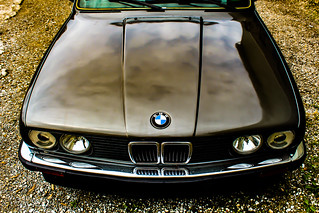Sunnyledge Keep up the good work, you'll be a pro soon and nothing can beat the sense of pride when you take it in for an inspection and it passes with flying colors
1984 318i Resurrection
Collapse
X
-
Nice! That's a massive improvement. Out of curiosity, what was/is the preferred seam sealer for this repair?Comment
-
Don’t know if there is a “best” seam sealer. I bought a can of “brushable” Transtar seam sealer, but it is hard to work with and get a smooth result. So I’ve gone to Dynatron (by 3m) seam sealer in a cartridge. Much easier to work with. Everything outside the car then gets Wurth underseal. My 2 cents.Comment
-
The seam sealer is critical where panels/repairs are spot welded, less important/more cosmetic where you have a continuous weld.Comment
-
The other strategic repair for this car was to the left front frame rail. This is pretty ugly and almost caused me to give up on this car. One option was to replace the entire frame rail, but that would have been a serious repair, drilling out maybe a hundred spot welds. I wasn’t sure if I had that skill set. Another less invasive alternative was to splice the forward section of the frame rail. The BMW E30 shop manual describes this procedure in the collision repair section. A little less work, but still the need to drill out many spot weld and not destroy those panels in the process and then weld in the replacement section. Another concern was could I make the repair and keep the frame properly aligned. I considered using my rusted front cross member to make a jig to overcome this issue.
1 PhotoComment
-
As I got further into this project and a little more confident that I could make these repairs I became more aggressive with removing rusted metal. So I went to work removing any rusted or damaged metal and this is what I was left with. I still had a sturdy frame rail that was just missing the anterior section and one of the two subframe bolt fixtures.
1 PhotoComment
-
So looking at this I came up with third alternative. The E30 frame rail is essentially a 16 gauge shell with an internal reinforcing framework. This internal framework is trapezoidal in cross section in the area where the subframe is bolted. I decided that I could create an additional structural framework that I could slide into the existing frame and then build the rest of the frame rail repairs around it. The new internal structure would be constructed with 4 one inch square tubing segments welded together and secured with plug welds through the undamaged frame.
1 PhotoComment
-
I malleted the framework into position and completed the plug welds. Using the threaded front subframe fixture from the damaged frame and a section of 2 1/4 inch steel tubing I created a new front subframe anchor. I positioned it by bolting the front subframe back in and placing a 1/16” shim between the anchor and the subframe and welded it on place.
2 PhotosComment
-
Next I tried to replicate the BMW factory inner frame reinforcement which were rusted and removed.
2 PhotosComment
-
With the 16 gauge reinforcements welded into place it was time to recreate the shell of the frame. As I couldn’t get the right radius on the bend to match the frame using my homemade angle iron bending brake, I went to my neighbor with the metal shop. It took him 5 minutes to create two 16 gauge U channels. I had him make two in case I screwed one up. I bolted one of the channels in place and replicated the frame contour.
2 PhotosComment
-
-
After the shell was welded into place and welds ground I gave it a coat of epoxy primer and then grey Rustoleum. The little hole in the front allowed me to spray a few coats of frames preserver inside followed by a few coats of cosmoline.
3 PhotosComment
-
The right rear quarter had major rust, but not the left. As the M10 318i does not have a trunk mounted battery, battery acid was not a contributing factor. I couldn’t find a US source for a patch panel, but was able to get one from overseas. $19 for the panel, but $60 to ship. I still considered it a bargain versus trying to fabricate this panel or going to a salvage yard for a less than perfect donor. Unfortunately the patch didn’t cover all the rust damage to the wheel arch, so I would need to fabricate a small patch. Once I removed the damaged outer panel I was able better understand the extent of the damage and to start fabricating repair panels.
3 PhotosComment
-
First came a patch to the rear valance which was fairly simple. Just need to connect all the welds.
1 PhotoComment
-
The panel for the “trunk well” is NLA (although there is now an overseas source). Template, rough panel, a couple of beads to add strength (and cause it looks neat) and a few bends.
3 PhotosComment



Comment